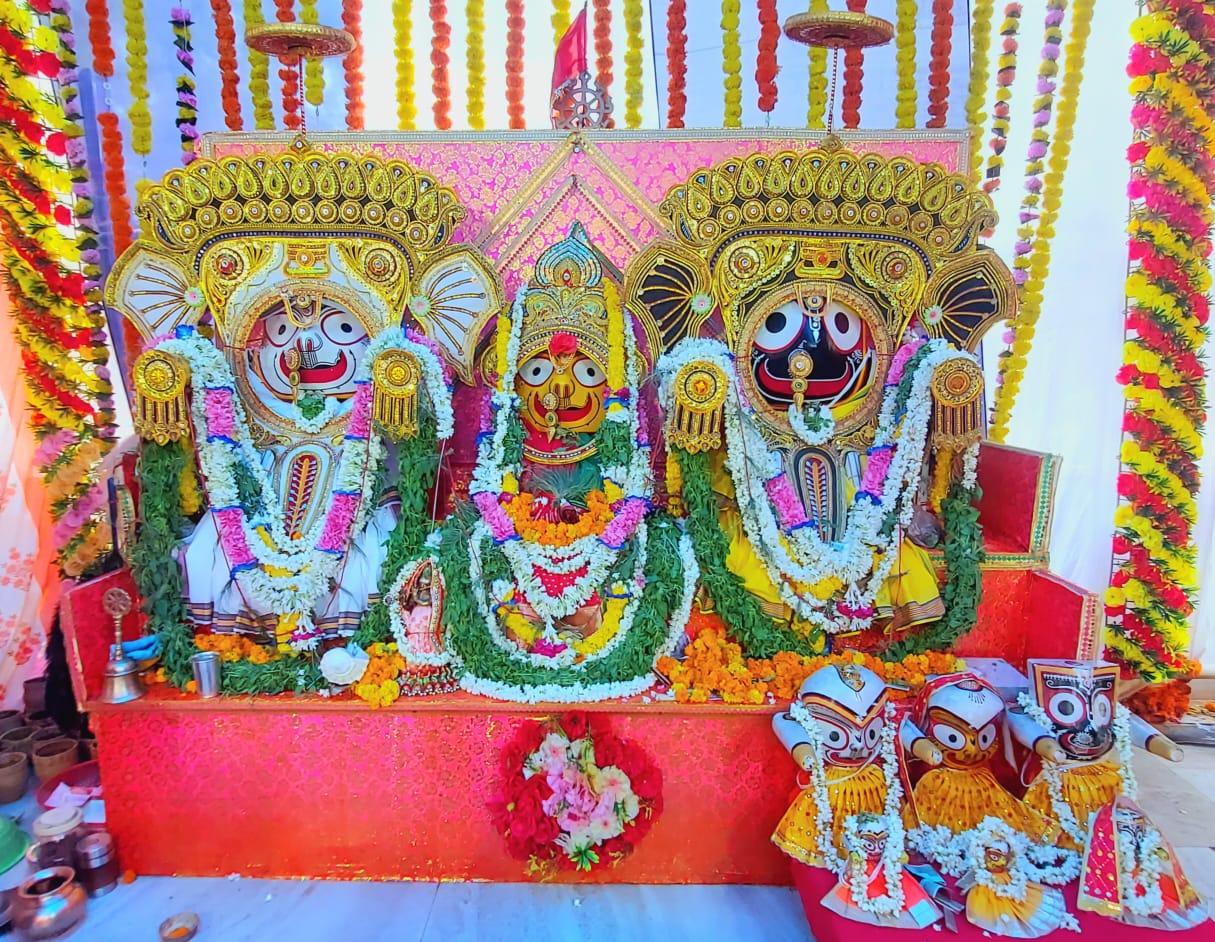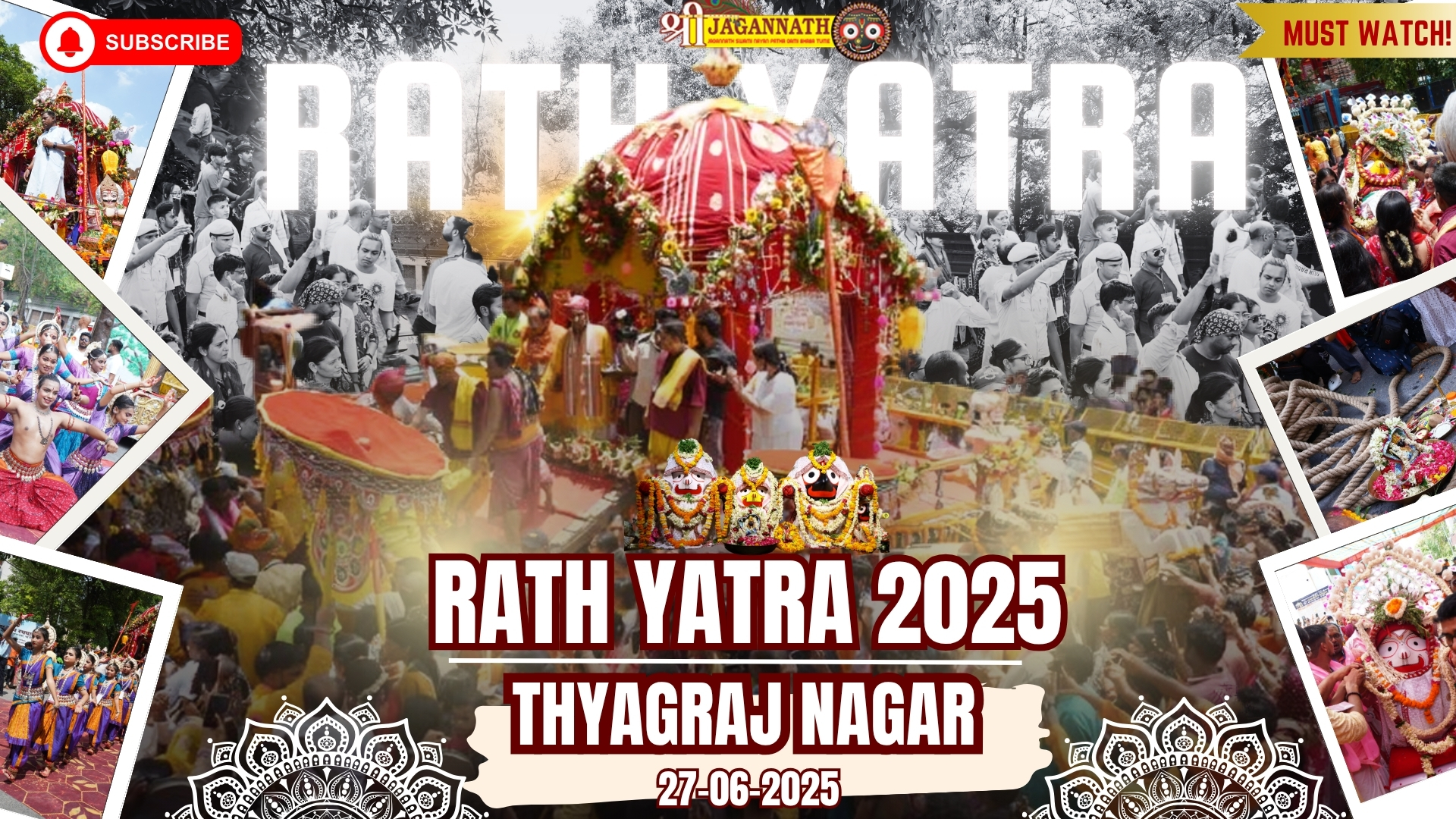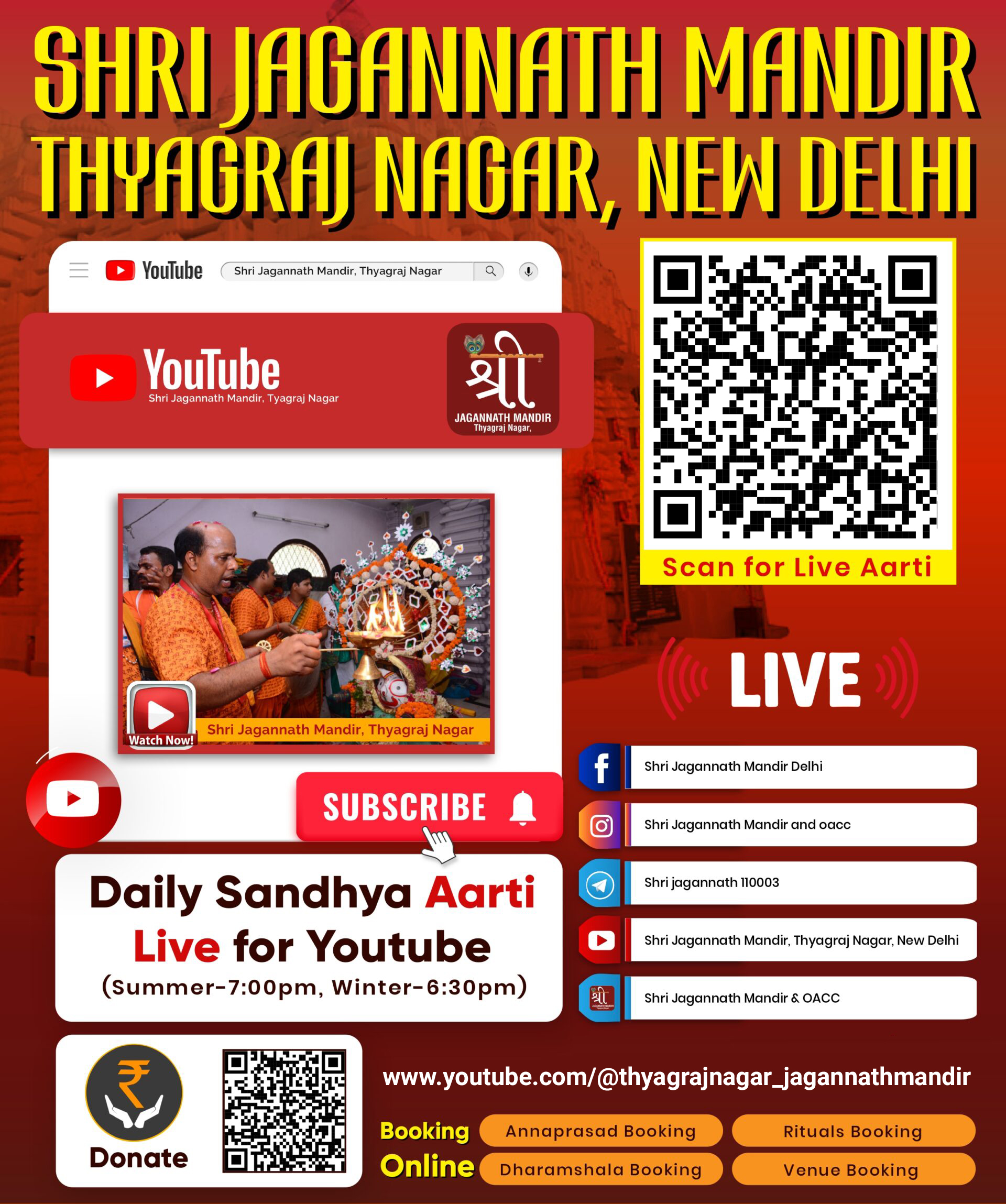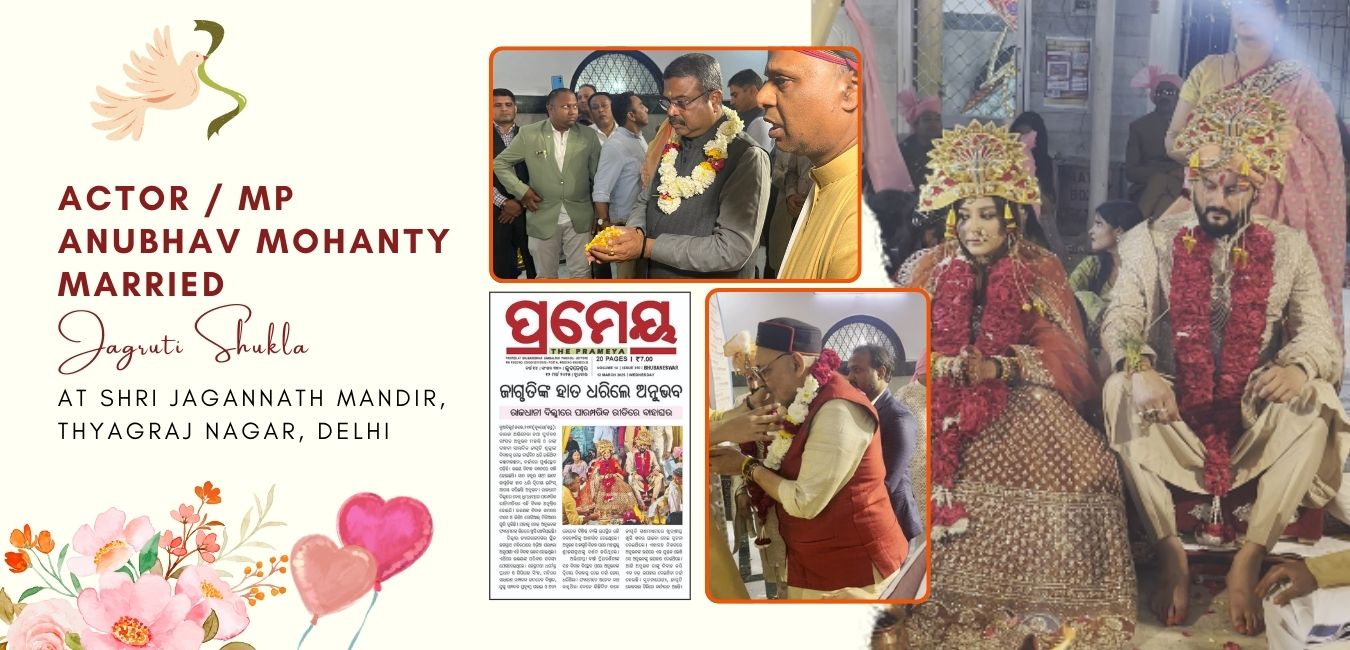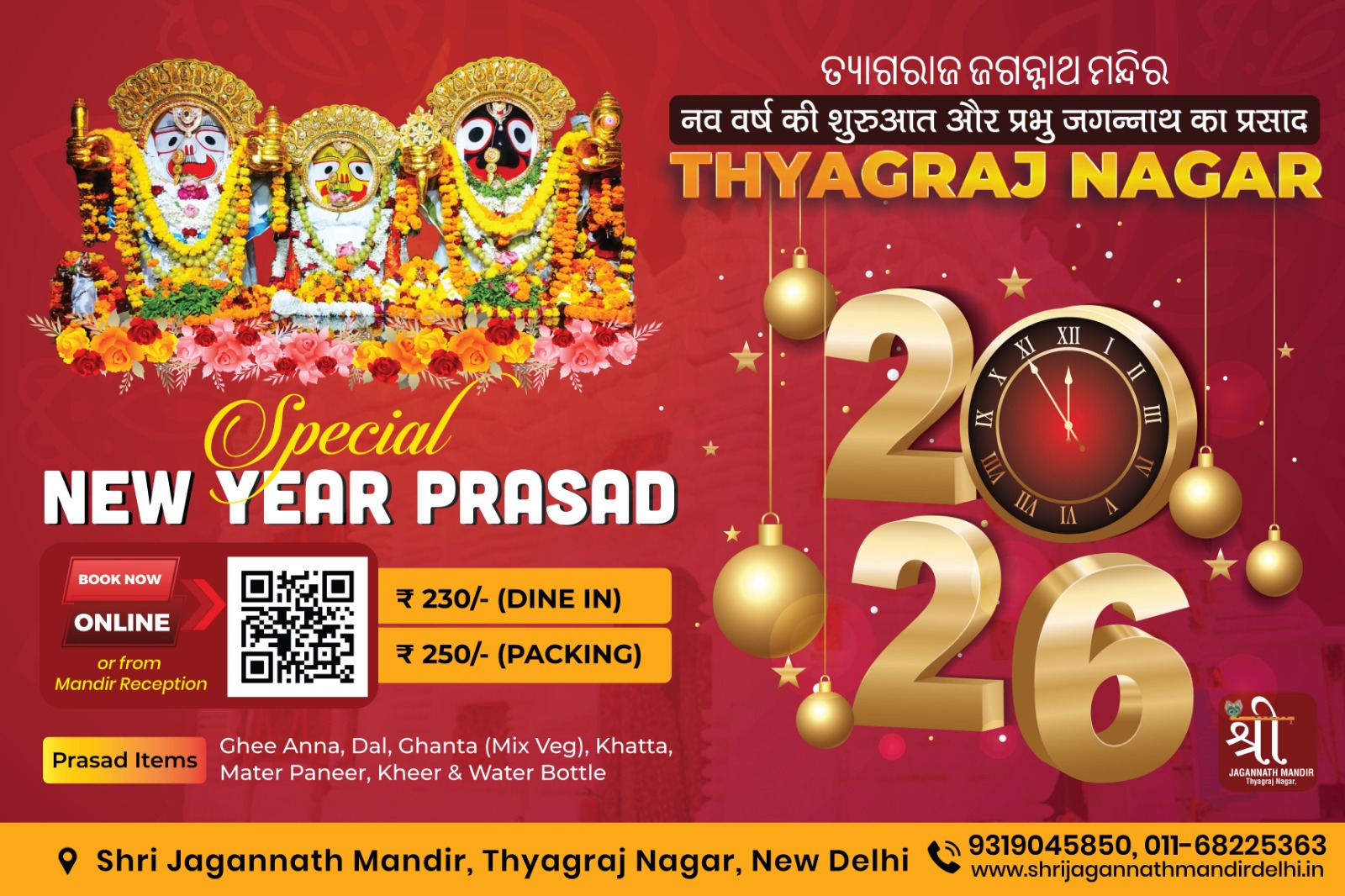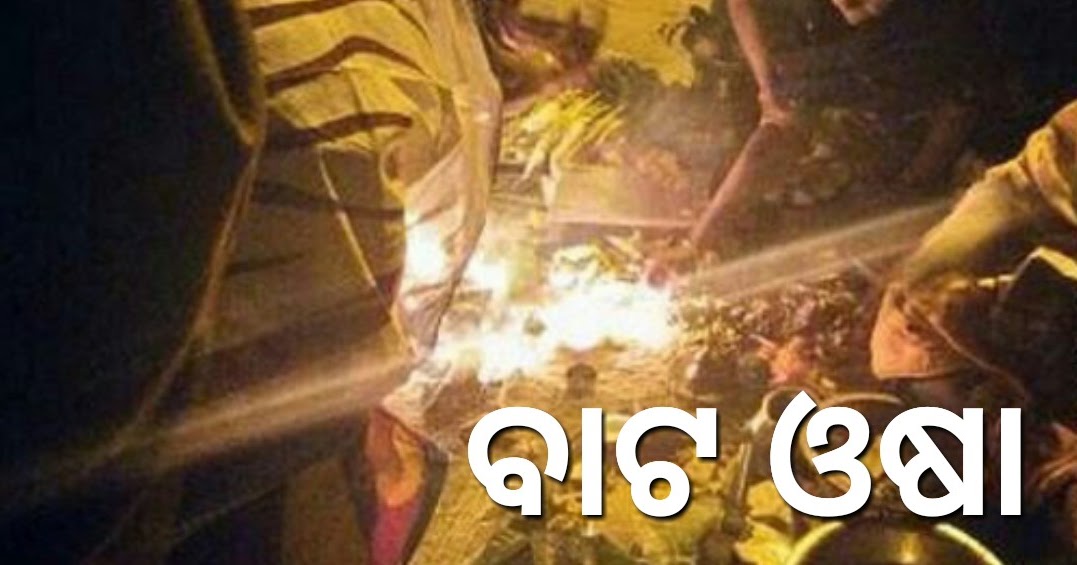🌕Introduction: Snana Purnima at Jagannath Mandir Delhi
Snana Purnima at Jagannath Mandir Delhi is a grand spiritual event that marks the ceremonial bathing of Lord Jagannath, Lord Balabhadra, and Goddess Subhadra. Held on the full moon day of Jyeshtha (May–June), this festival welcomes thousands of devotees to witness the divine bath, elephant attire (Hati Besha), and the revered 56 Bhog. The ritual marks the beginning of Rath Yatra celebrations with purity, devotion, and festivity.
📜 Mythological Significance of Snana Purnima
According to Jagannath tradition, Snana Purnima commemorates the day the deities bathe in 108 pots of sacred water to purify themselves before the Rath Yatra. This act is believed to bring spiritual blessings to all who witness it. Scriptures mention this sacred bath as an act of love towards devotees, where the divine meets humanity in its most accessible form.
🙏 Rituals of Snana Purnima at Jagannath Mandir Delhi
🚩 1. Pahandi Bije
The festival begins with the Pahandi Bije procession, where the deities are carried from the sanctum to the Snana Mandap with traditional drums, chants, and conch shells.
🛕 2. Snana Vedi – The Sacred Platform
At the Snana Vedi, the deities are placed for public darshan. This altar is decorated with flowers, kalash, and auspicious symbols.
💧 3. Holy Bath with 108 Pots
Priests bathe the idols with 108 pots of sanctified water from the Suna Kua (Golden Well), mixed with sandalwood, turmeric, and herbs, accompanied by Vedic chants and mantras.
🐘 4. Hati Besha – The Elephant Attire
After the bath, the deities are dressed in Hati Besha, resembling Lord Ganesha. This rare sight draws massive crowds and celebrates divine beauty and transformation.
🌿 5. Anavasara – Rest Period
After bathing, the deities are believed to fall ill and enter a 15-day seclusion called Anavasara. During this time, special herbal remedies are offered, and public darshan is restricted.
👁️ 6. Netrotsava – Eye Rejuvenation
The ritual concludes with Netrotsava, where the eyes of the deities are repainted, symbolizing their readiness for Rath Yatra.
🍽️ 56 Bhog Offering During Snana Purnima
A grand 56 Bhog is offered to the deities during the Snana Purnima celebrations. This includes sweets, rice dishes, fruits, and traditional offerings made with devotion. It symbolizes abundance, gratitude, and divine nourishment.
🎭 Cultural and Spiritual Vibe
The Snana Purnima at Jagannath Mandir Delhi is not just a ritual—it’s a spiritual carnival. Families, children, and elders participate with joy, singing bhajans and soaking in the festive spirit. The rituals reflect the living tradition of the Jagannath culture outside Puri, right in the heart of Delhi.
❓ FAQs About Snana Purnima at Jagannath Mandir Delhi
Q1. What is Snana Purnima?
Snana Purnima is a sacred bathing festival celebrated before Rath Yatra, during which Lord Jagannath, Balabhadra, and Subhadra are bathed with 108 pots of holy water.
Q2. Where is Snana Purnima celebrated in Delhi?
Snana Purnima is grandly celebrated at Shri Jagannath Mandir, Thyagraj Nagar, Delhi, with full rituals including Pahandi Bije, Hati Besha, and 56 Bhog.
Q3. What is Hati Besha?
Hati Besha is the elephant attire in which Lord Jagannath and his siblings are dressed after their bath, resembling Lord Ganesha.
Q4. What is the significance of 56 Bhog during Snana Purnima?
The 56 Bhog is a divine offering of 56 food items symbolizing abundance, devotion, and love offered to Lord Jagannath after the bathing ceremony.
Q5. Can anyone attend Snana Purnima celebrations in Delhi?
Yes, Snana Purnima at Jagannath Mandir Delhi is open to all devotees. Visitors can join the rituals, witness the Hati Besha, and receive darshan and prasad.
Conclusion
Snana Purnima at Jagannath Mandir Delhi is a beautiful union of tradition, community, and devotion. With sacred rituals, divine bathing, Hati Besha, and 56 Bhog, it sets the perfect stage for the upcoming Rath Yatra. Don’t miss this opportunity to immerse yourself in divine energy with your loved ones.
📍 Visit Shri Jagannath Mandir, Thyagraj Nagar, Delhi
Celebrate this holy Yatra with family and friends.
📍 Location
Temple Address: Shri Jagannath Marg, Thyagraj Nagar, New Delhi – 110003
Entry Gates:
Pedestrian: Gate 1, Thyagraj Nagar Residential Colony
Vehicle: Gate 2, Near Tyagraj Stadium Gate No-1
- Google Map लिंक: Shri Jagannath Mandir Location
- फोन: +91-9319045850


